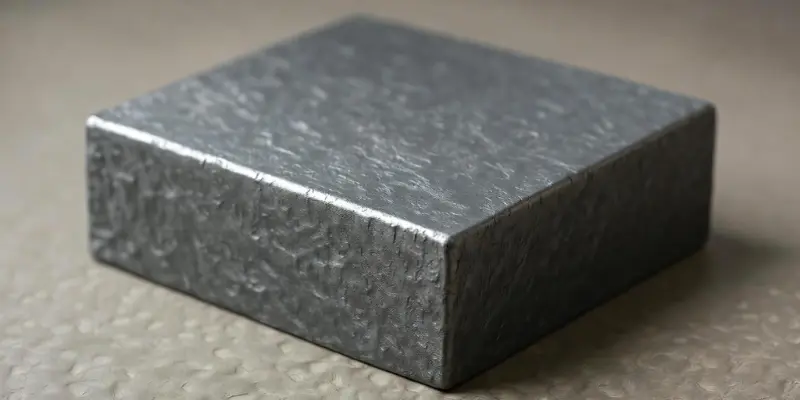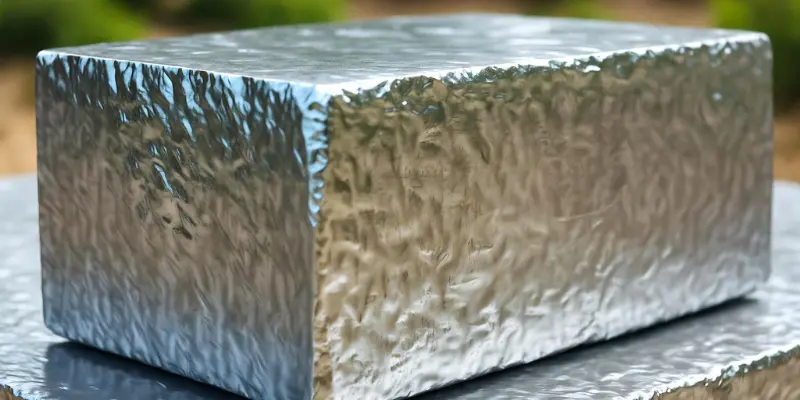Melting Points of Metals
Updated: 18 Oct 2025
15
Many people often ask about the melting points of metals. This topic is important because the melting temperature of a metal can change how well it performs in different uses. When working on a project that involves heat, knowing the melting point helps to prevent damage and ensures better results. If metal is going to be melted or exposed to high heat, it is important to know at what temperature that particular metal begins to soften or turn into liquid.
Iron alloys and steel have some of the highest melting temperatures among common metals. These materials melt at around 2,200 to 2,500 degrees Fahrenheit which equals about 1,205 to 1,370 degrees Celsius. Metals that contain copper, such as bronze, brass, and pure copper, melt at slightly lower temperatures. Their melting points range from about 1,675 to 1,981 degrees Fahrenheit or about 913 to 1,082 degrees Celsius. Aluminum melts even sooner than copper. Pure aluminum becomes liquid at about 1,218 degrees Fahrenheit or 659 degrees Celsius. When other elements are mixed with aluminum, the melting temperature can rise slightly depending on the alloy composition.

Below you will find detailed information about metals with the lowest and highest melting points. The following sections also include a helpful table showing common metals and their melting points in both Fahrenheit and Celsius.
Which Metal Has the Lowest Melting Point
At the lower end of melting temperatures, lead is one of the easiest metals to melt. Lead melts at around 621 degrees Fahrenheit which equals 327 degrees Celsius. Because of this, lead was once used for many low-temperature applications such as soldering and casting, though it is used less often today due to safety reasons.

The melting point of metals is not always fixed at a single temperature. Every metal has a range between two stages called Solidus and Liquidus. The Solidus point is when the metal starts to soften, and the Liquidus point is when the metal becomes fully liquid. This range helps scientists and engineers understand how metal behaves when heat is applied gradually.
Understanding this process is useful for those who work with melting or shaping metals. It allows careful control over heating to avoid damaging the structure or creating weak spots.
Which Metal Has the Highest Melting Point
At the opposite end of the temperature scale, some metals require extremely high heat to melt. Nickel and tungsten are two examples of metals that melt only at very high temperatures. Nickel becomes liquid at about 2,646 degrees Fahrenheit which equals 1,452 degrees Celsius. Tungsten, one of the toughest and most heat-resistant metals, melts at around 6,150 degrees Fahrenheit or 3,399 degrees Celsius. This extremely high temperature makes tungsten useful in products that must withstand strong heat such as light bulb filaments, rocket engine parts, and industrial tools.

Common Melting Points of Metals
The chart below lists some of the most common metals used in manufacturing. These metals are often chosen for their strength, resistance to rust, and ability to handle high temperatures. This table can help identify which metals can be used for different industrial or creative projects.
| Metals | Fahrenheit (°F) | Celsius (°C) |
|---|---|---|
| Aluminum | 1,220 | 660 |
| Yellow Brass | 1,660–1,710 | 905–932 |
| Bronze | 1,675 | 913 |
| Red Brass | 1,810–1,880 | 990–1,025 |
| Copper | 1,983 | 1,084 |
| Cast Iron | 2,060–2,200 | 1,127–1,204 |
| Carbon Steel | 2,500–2,800 | 1,371–1,593 |
| Nickel | 2,647 | 1,453 |
| Wrought Iron | 2,700–2,900 | 1,482–1,593 |
| Stainless Steel | 2,750 | 1,510 |
| Titanium | 3,040 | 1,670 |
These metals are commonly found in construction, electronics, vehicles, and kitchen tools. Knowing their melting points helps manufacturers pick the right material for the right job.
Full List of All Metals and Their Melting Temperatures
The following table shows a more detailed list of various metals and their melting temperatures in Fahrenheit, Celsius, and Kelvin. This information is useful for scientific study, metalworking, and material selection. Although not all these metals are available in every market, this table serves as a good reference guide.
| Metals | Fahrenheit (°F) | Celsius (°C) | Kelvin (K) |
|---|---|---|---|
| Mercury | -38 | -39 | 234 |
| Phosphorus | 111 | 44 | 317 |
| Selenium | 423 | 217 | 490 |
| Tin | 449 | 232 | 505 |
| Babbitt | 480 | 249 | 522 |
| Bismuth | 521 | 272 | 545 |
| Cadmium | 610 | 321 | 594 |
| Lead | 621 | 328 | 600 |
| Magnesium Alloys | 660–1,200 | 349–649 | 622–922 |
| Zinc | 787 | 420 | 693 |
| Aluminum Alloys | 865–1,240 | 463–671 | 736–944 |
| Aluminum Bronze | 1,190–1,215 | 600–655 | 916–930 |
| Magnesium | 1,200 | 650 | 922 |
| Pure Aluminum | 1,220 | 660 | 933 |
| Beryllium Copper | 1,587–1,750 | 865–955 | 1,137–1,228 |
| Manganese Bronze | 1,590–1,630 | 865–890 | 1,139–1,161 |
| Sterling Silver | 1,640 | 893 | 1,166 |
| Admiralty Brass | 1,650–1,720 | 900–940 | 1,172–1,211 |
| Yellow Brass | 1,660–1,710 | 905–932 | 1,178–1,205 |
| Bronze | 1,675 | 913 | 1,186 |
| Pure Silver | 1,761 | 961 | 1,234 |
| Red Brass | 1,810–1,880 | 990–1,025 | 1,261–1,300 |
| Gold | 1,945 | 1,063 | 1,336 |
| Copper | 1,983 | 1,084 | 1,357 |
| Cast Iron | 2,060–2,200 | 1,127–1,204 | 1,400–1,478 |
| Ductile Iron | 2,100 | 1,149 | 1,422 |
| Manganese | 2,271 | 1,244 | 1,517 |
| Beryllium | 2,345 | 1,285 | 1,558 |
| Monel | 2,370–2,460 | 1,300–1,350 | 1,572–1,622 |
| Hastelloy | 2,410–2,460 | 1,320–1,350 | 1,594–1,622 |
| Carbon Steel | 2,500–2,800 | 1,371–1,540 | 1,644–1,811 |
| Inconel | 2,540–2,600 | 1,390–1,425 | 1,666–1,700 |
| Incoloy | 2,540–2,600 | 1,390–1,425 | 1,666–1,700 |
| Silicon | 2,572 | 1,411 | 1,684 |
| Nickel | 2,647 | 1,453 | 1,726 |
| Wrought Iron | 2,700–2,900 | 1,482–1,593 | 1,755–1,866 |
| Cobalt | 2,723 | 1,495 | 1,768 |
| Stainless Steel | 2,750 | 1,510 | 1,783 |
| Palladium | 2,831 | 1,555 | 1,828 |
| Titanium | 3,040 | 1,670 | 1,944 |
| Thorium | 3,180 | 1,750 | 2,022 |
| Platinum | 3,220 | 1,770 | 2,044 |
| Chromium | 3,380 | 1,860 | 2,133 |
| Rhodium | 3,569 | 1,965 | 2,238 |
| Niobium (Columbium) | 4,473 | 2,470 | 2,740 |
| Molybdenum | 4,750 | 2,620 | 2,894 |
| Tantalum | 5,400 | 2,980 | 3,255 |
| Rhenium | 5,767 | 3,186 | 3,459 |
| Tungsten | 6,150 | 3,400 | 3,672 |
Conclusion
The melting point of metals plays a key role in shaping, casting, and manufacturing. Each metal reacts to heat differently, and knowing its exact melting range helps to make stronger, safer, and more reliable products. Metals like aluminum and lead melt easily and are great for light or flexible uses. On the other hand, metals such as tungsten and titanium can resist very high heat, making them perfect for space, energy, and heavy industry applications.
Please Write Your Comments